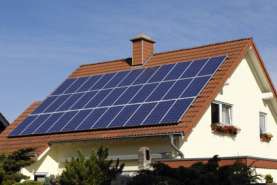Sustainable power markets – Greg Reid

In building a sustainable economy it is instructive to see how a relatively small intervention now appears to be leading to the unintended consequence of a sustainable electricity market.
Subsidies for rooftop solar were initially intended to encourage no more than a politically cosmetic change in a national grid dominated by massive fossil fuel power stations. These power stations had shaped a captive market where much of the profit lay in high pricing for peak demand periods and growth driven by consumer electronics that lacked design for efficient power use.
Subsidised roof top solar still required a substantial investment by consumers but households, churches and businesses widely embraced the opportunity. The motives were not just financial but environmental and the desire for at least partial independence from a manipulated market. Now, approximately 1 in 5 Australian household have at least some rooftop solar.
Overconfident power generators and networks continued to raise tariffs while a revolution was taking place in the demand/supply relationship. Solar shaved off summer peak loads and a power conscious public had halted demand growth by choosing efficient appliances. Solar producer/consumers had become “prosumers” and were no longer content to be price takers.
Faced with falling rebates for solar power, more and more households are opting for battery storage so as to use their own power at night. This trend has begun to drive falling costs in batteries as it had done with solar panels. In new housing it is already cheaper to install a wholly independent solar/battery system than to connect to the power grid. Widespread battery storage will also cut winter peak demand.
Amongst solar prosumers the power grid is no longer considered as essential but as an optional backup for extend- ed overcast conditions. Networks and power generators have responded to contracting profit margins by raising charges, especially daily connection fees, but this only drives further reject- ion of the power grid by prosumers.
The critical challenge will come in the next decade when aging and inefficient fossil fuel generators cannot be refinanced and are forced to shut down. The loss of major base-load generators will be disruptive unless the government accepts the inevitable and actively plans for diversified, large scale renewables that can fill the gaps. More market driven wind and solar farms will not suffice. Instead, wave energy and solar thermal with storage will be needed.
The electricity market is rapidly trans- forming to favour a more diversified, dispersed and sustainable system despite resistance from the power companies and inconsistent government policies. The transformation has not been due to a disruptive new technology since solar panels have been available for decades. Large scale wind and solar farms have played a competitive role but did not alter the consumer/producer relationship.
Instead the fundamental change was initiated by temporary subsidies that lowered cost barriers to roof top solar.
Perhaps other markets can be launched onto sustainable trajectories by initial subsidies that encourage consumers to become prosumers.
Greg Reid is an ERA member living in NSW.





















